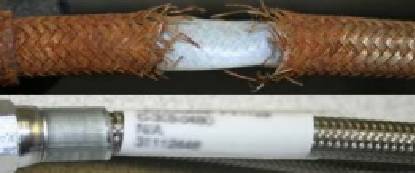Incident Report
Subject: CCPS Bulletin - Hose Hazards
Date
of Email report: Sat 29/10/2011
Report Detail:

Hoses can be a significant hazard in a process plant. They must be properly maintained, stored, and inspected. Here are some examples of incidents caused by hose failure:
- An unloading hose on a chlorine railroad tank car failed because of corrosion. It was found that the hose was not made of the correct material. It was stainless steel instead of the specified Hastelloy C, a metal alloy. Nearly 25 tons of chlorine was released, 63 neighbors sought medical attention, hundreds had to shelter in place, and a highway was closed.
- A hose used to unload cylinders of phosgene, a highly toxic gas, failed. A worker was exposed and later died in the hospital. The hose was made of the specified material of construction, although company engineers had recommended changing to a different material. It was found that an adhesive
tag on the hose trapped phosgene which slowly diffused from inside the hose through the plastic hose core. This caused faster corrosion under the label, and that is where the failure occurred.
- There are many reports of dirty hoses causing contamination of process equipment, product contamination, and dangerous chemical reactions.
- If a hose is blocked with solid material, it will pressurize up to the line pressure. If the blockage breaks free, a projectile could be released causing significant damage, or, if the hose is worn or weakened, it could burst
Additional Documentation:
|


